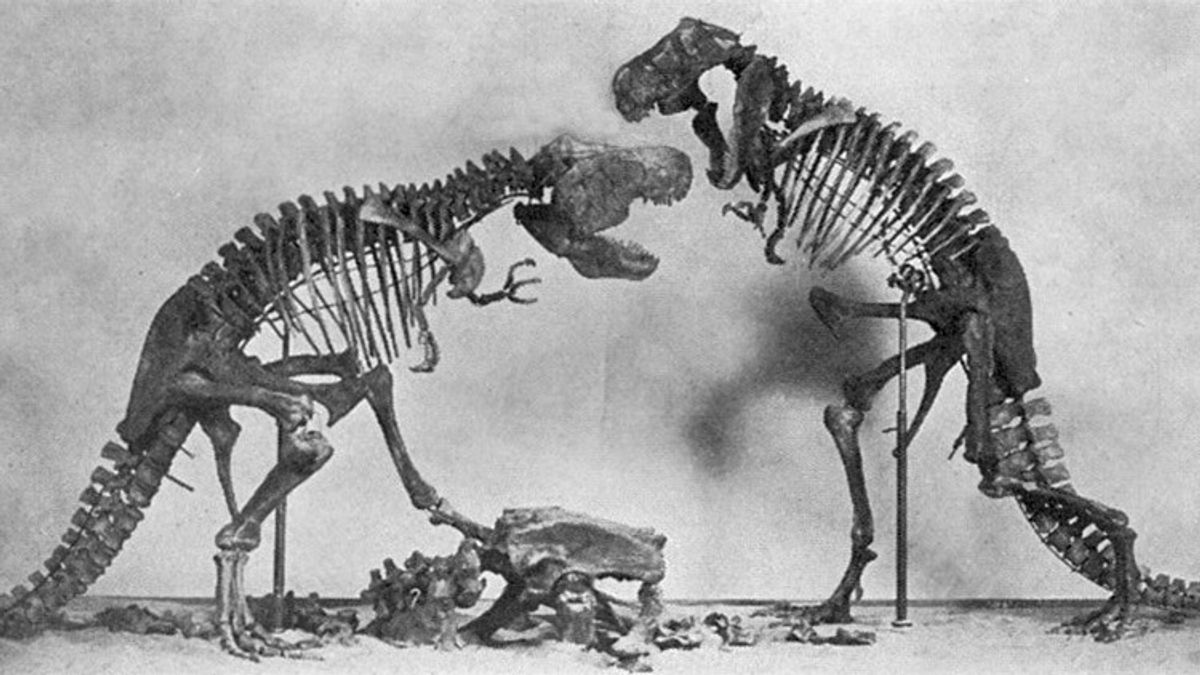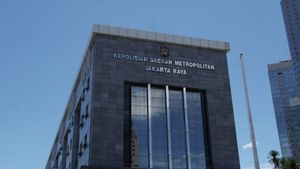JAKARTA - A study reveals a new veil about a location on the edge of the Sahara Desert, to be precise in the East Morocco region. The region has been identified as the most dangerous location in Earth's history.
In the past, a chunk of limestone was found in that area which was thought to be a trace of dinosaur remains. According to Science Alert, a place named Kem Kem Group is suspected to represent the most dangerous place in prehistoric life on Earth.
The reason is, the place is inhabited by many large carnivores, as evidenced in fossil discoveries there. "This is arguably the most dangerous place in Earth's history, a place where (if any) time travelers will not last long," said University of Detroit Mercy paleontologist Nizar Ibrahim.
The latest study by Ibrahim and his team looked at fossil deposits originating from the so-called "Kem Kem bed", which are ancient fossil chunks located on the Moroccan-Algeria border.
Many people have long known the existence of this site. Not only scientists, but also by those who hunt for fossils to be traded such as fossils of ancient dinosaurs, reptiles and other creatures that were looted and have been scattered around the world in private collections.
The scattering of these fossils makes it difficult for scientists to provide an overview of what Kem Kem Group actually was like in prehistoric times. Therefore, based on research that visits directly to the place of the scattered fossils on several continents, Ibrahim and his team managed to uncover a new comprehensive discovery.
"This is the most comprehensive work on vertebrate fossils from the Sahara in nearly a century since the renowned German paleontologist Ernst Freiherr Stromer von Reichenbach published his last major work in 1936," said one of the other research team members from the University of Portsmouth, David Martill.
The research, said Ibrahim, opened a window into the dinosaur era in Africa. He argues that the Kem Kem Group actually includes two distinct large fossil site formations, namely the one called Gara Sabaa at the bottom and the Douira at the top.
Both formations show fossils of dinosaurs and pterosaurs, in addition to ancient crocodiles, turtles, fish remains, plus various invertebrates and plants. Previously, the Kem Kem Group indicated that there were four different types of Theropod - dinosaur family - including Abelisaurid, Spinosaurus aegyptiacus, Carcharodontosaurus saharicus, and Deltadromeus agilis.
Meanwhile, it is estimated that only one or two large predatory bodies will be found. However, this latest research has managed to reveal more of the missing pieces at Kem Kem. The result was that there were more large-bodied predators than had previously revealed.
"There are at least three to four large predators in Kem Kem and in the Bahariya Desert, including the largest dinosaur predators ever found," the study wrote.
At the same time, herbivorous dinosaurs were not very much there, although they most likely lived together with large meat-eaters.
However, there is still much that predators can eat. Because about 100 million years ago the area was a headland and there was an abundance of fish and marine animals. This certainly keeps the theropod population awake.
The English, Chinese, Japanese, Arabic, and French versions are automatically generated by the AI. So there may still be inaccuracies in translating, please always see Indonesian as our main language. (system supported by DigitalSiber.id)









